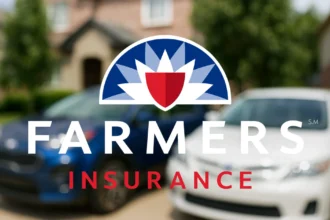For potential homebuyers dreaming of spacious land and tranquil country living, USDA loans offer an affordable path to owning property in rural areas. Created by the U.S. Department of Agriculture (USDA), these government-backed mortgages come with lenient credit requirements and zero down payment options for income-qualified borrowers purchasing homes in designated rural and suburban locales.
With generous terms and expanded eligibility, USDA loans unlock homebuying opportunities that might otherwise seem out of reach. Read on to learn what makes these mortgages unique, who qualifies, pros and cons to weigh, and how to pursue a USDA-backed loan.
What Is a USDA Loan?

USDA loans are mortgages backed by the USDA’s Rural Development division. The program’s core aims are to promote homeownership and community growth in America’s small towns and countryside.
USDA loans assist low- to moderate-income buyers by offering:
- Little or no down payment. No down payment is required for USDA-guaranteed mortgages issued by approved lenders. USDA direct loans sometimes necessitate a small down payment.
- Flexible credit standards. Minimum credit scores are lower compared to conventional loans. Alternative evaluation methods are available for thin-file borrowers.
- Lower interest rates. USDA’s backing enables approved lenders to extend credit on good terms. Interest rates on direct USDA loans can be reduced to as low as 1% with payment subsidies.
- Long repayment terms. Direct USDA mortgages stretch up to 38 years for very low-income households.
- No mortgage insurance. USDA borrowers pay an upfront guarantee fee and annual fee in lieu of private mortgage insurance (PMI).
To qualify, you’ll need to meet location and income limits imposed by the USDA. Approved properties must be situated in eligible rural and suburban areas as designated by the agency.
Types of USDA Loans
The USDA Rural Development Division administers several distinct home loan and grant programs:
USDA Guaranteed Loans
Also called Section 502 Guaranteed Loans, these mortgages are issued by USDA-approved lenders such as banks, credit unions, and mortgage companies. The USDA guarantees a portion of the loan, typically 90%, which enables lenders to offer favorable rates and terms.
Guaranteed USDA loans are best suited to low- to moderate-income buyers who exceed income caps for direct USDA loans.
USDA Direct Loans
USDA Direct loans, or Section 502 Direct loans, come straight from the USDA itself. They assist lower-income households earning less than the threshold for guaranteed loans.
Direct USDA mortgages feature fixed low interest rates, with options to further reduce the rate to just 1% for eligible borrowers. Loan terms reach up to 38 years.
USDA Home Improvement Loans and Grants
These two USDA offerings help homeowners repair, improve, modernize, or remove health and safety hazards from their dwellings.
- Section 504 Home Repair Loans – Low-interest loans up to $40,000 for homeowners and landlords
- Section 504 Home Repair Grants – Grants up to $10,000 for homeowners 62 and older unable to repay a loan
READ ALSO: What is a Conventional Loan? Exploring This Common Mortgage Option
Who Is Eligible for USDA Loans?
USDA mortgages aren’t available to everyone. Eligibility hinges on your location, income, citizenship status, and creditworthiness.
Location Requirements
The home you wish to buy or improve must be situated in an eligible rural or suburban area as defined by the USDA. Eligible locations tend to be less densely populated communities, such as:
- Open countryside
- Rural towns and villages
- Small cities not associated with urban clusters
- Suburban areas near rural towns
The USDA provides an eligibility map to search properties by address.
Income Limits
Your household income must fall below ceilings dictated by the USDA for your particular area and family size. Income caps for guaranteed loans run up to 115% of the median household income in your county. Direct loan thresholds are lower.
Credit History
USDA doesn’t enforce blanket credit score minimums across all its mortgage programs. However, you will need a credit history demonstrating responsible use of credit and ability to repay debts.
For streamlined processing, a minimum FICO score of 640 is recommended for guaranteed loans. Thin-file applicants can be assessed through alternative USDA criteria.
Citizenship
You must be a U.S. citizen, U.S. non‐citizen national, or “qualified alien” per USDA definitions to qualify for its home loan programs.
READ ALSO: What is a Payday Loan? Understanding the Risks and Alternatives
Pros and Cons of USDA Loans
USDA mortgages offer unique advantages paired with potential drawbacks to weigh:
Pros
- Little or no down payment required
- More flexible credit standards
- Access to lower interest rates
- Avoid private mortgage insurance (PMI)
- Long repayment terms available
Cons
- Limited to designated rural/suburban areas
- Home must be primary residence
- Income ceilings imposed
- Upfront and annual fees
- Potentially smaller loan amounts
While not for everyone, USDA loans can be an excellent fit for eligible borrowers lacking resources for large down payments or those who don’t meet conventional mortgage requirements.
USDA Loan Requirements
Beyond location and income limits, USDA mortgages entail several core requirements surrounding your finances, property, and loan purpose.
Down Payment
No down payment is expected for USDA-guaranteed loans issued by approved lenders. Low down payments of just $100 or $1,000 may be required for direct USDA mortgages in some cases.
Home Type and Use
USDA loans must be used to purchase (or construct) a primary residence. Eligible property types include single-family homes, townhouses, condos, manufactured homes, and homes on acreages.
Debt-to-Income Ratio
Your total monthly debt payments, including the future mortgage payment, cannot exceed 41% of your gross monthly income under USDA requirements.
Home Inspection
Properties must meet USDA standards regarding safety, security, sanitation, and structural soundness. Home inspections will be conducted to verify compliance.
Home Value
For direct loans, the purchase price or appraised value of the home cannot surpass applicable area loan limits dictated by USDA. Limits range from around $300,000 to over $800,000, depending on the county.
How To Apply for a USDA Home Loan
Follow these steps when pursuing a USDA-backed mortgage:
- Verify eligibility. Double check location and income requirements using USDA’s online lookup tools.
- Select loan type. Decide whether you need a guaranteed or direct USDA loan based on your income.
- Find a lender. For guaranteed loans, find a USDA-approved lender. Apply through your state’s USDA Rural Development office for direct loans.
- Submit loan application. Work with your lender or USDA office to complete required paperwork and documentation.
- Search for homes. Once pre-approved, start previewing eligible properties in your target area.
- Make an offer. Place an offer on your dream home, contingent on USDA approval.
- Close loan. Coordinate closing once your offer is accepted and USDA gives the green light.
Compile pay stubs, tax returns, bank statements, and other items to verify your income and assets. Be ready for credit checks, property appraisals, and home inspections throughout the underwriting process.
USDA Loan vs. Conventional Loan vs. FHA Loan
How do USDA mortgages compare to other popular home loan options? Here’s an overview of key differences:
| Loan Type | Down Payment | Credit Score | Mortgage Insurance | Interest Rates |
| USDA | None | 640+ | Upfront and annual fees | Below market |
| Conventional | 3-20% | 620+ | Required if under 20% down | Market rates |
| FHA | 3.5% | 580+ | Required | Below market |
USDA loans occupy a unique niche given their rural focus, minimal down payments, flexible credit requirements, and subsidized low rates unavailable with conventional mortgages.
Government-backed FHA loans allow lower credit scores and down payments, like USDA loans, but require mortgage insurance and don’t offer the same degree of rate discounts.
Conventional mortgages generally call for higher down payments and credit scores than USDA or FHA loans. But they may offer access to larger loan amounts and homes in non-rural locales.
Conclusion
For qualifying buyers, USDA home loans unlock an affordable path to owning rural property that might otherwise be out of reach. Minimal down payments, flexible credit standards, and subsidized low rates help serve low- to moderate-income families across America’s small towns and countryside.
While USDA loans aren’t for everyone, those who meet eligibility terms can benefit from this unique government-backed mortgage option. Weigh the pros and cons, verify your eligibility, and consult USDA-approved lenders to determine if a USDA loan is your ticket to realizing the dream of homeownership.
FAQs About USDA Loans
Can I use a USDA loan to refinance?
Yes, you can refinance an existing USDA loan into a new USDA mortgage. Refinancing from other loan types into a USDA loan is restricted.
What USDA fees will I pay?
Guaranteed USDA borrowers pay a 1% upfront guarantee fee and 0.35% annual fee. There are no similar fees for direct USDA loans.
What credit score is needed?
Minimum scores vary by lender. Aim for 640+ for streamlined processing, but alternative USDA criteria may permit lower scores.
Can I buy a condo with a USDA loan?
Yes, you can purchase an eligible condo, townhouse, or manufactured home with a USDA-backed mortgage if it meets location and quality standards.
How do I find USDA-approved areas?
Search any address using the USDA’s Property Eligibility Tool to see if it falls within an eligible rural or suburban zone.
Can I check income limits online?
Yes, you can verify income caps for your particular area and household size using the USDA’s online income tool.
In another related, What is a PPP Loan? Exploring the Paycheck Protection Program





